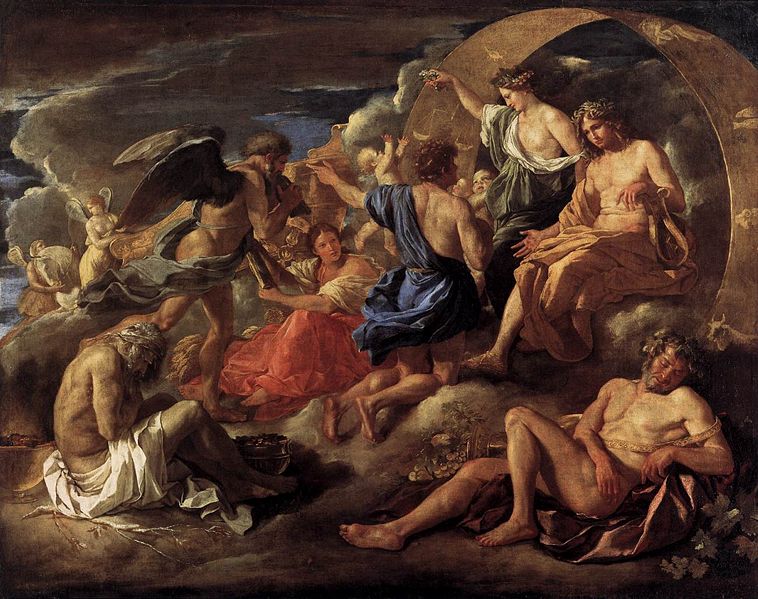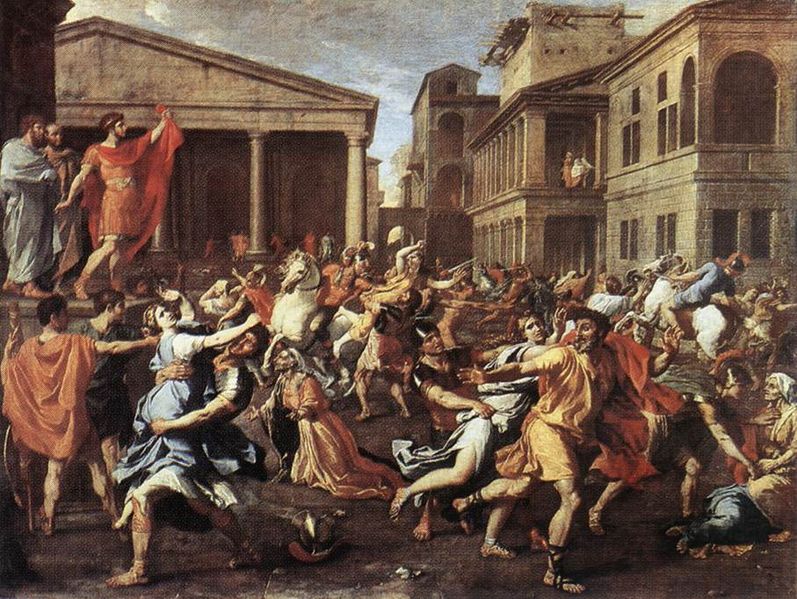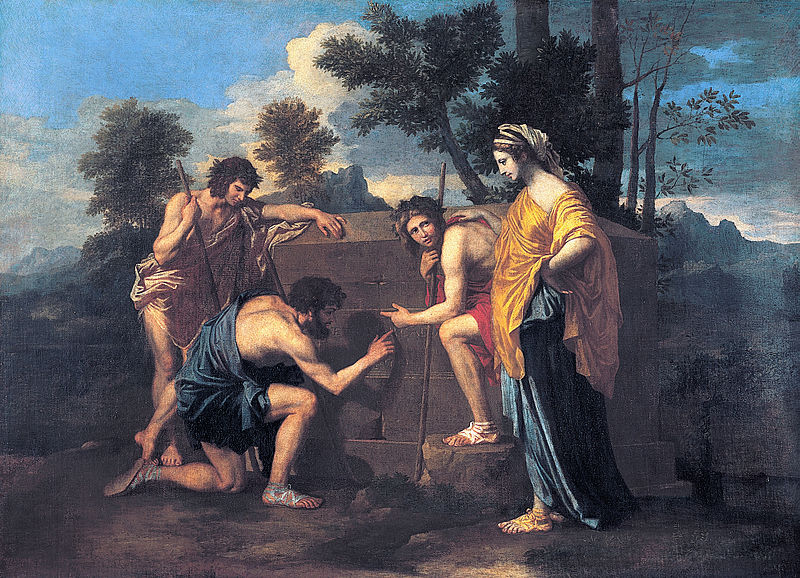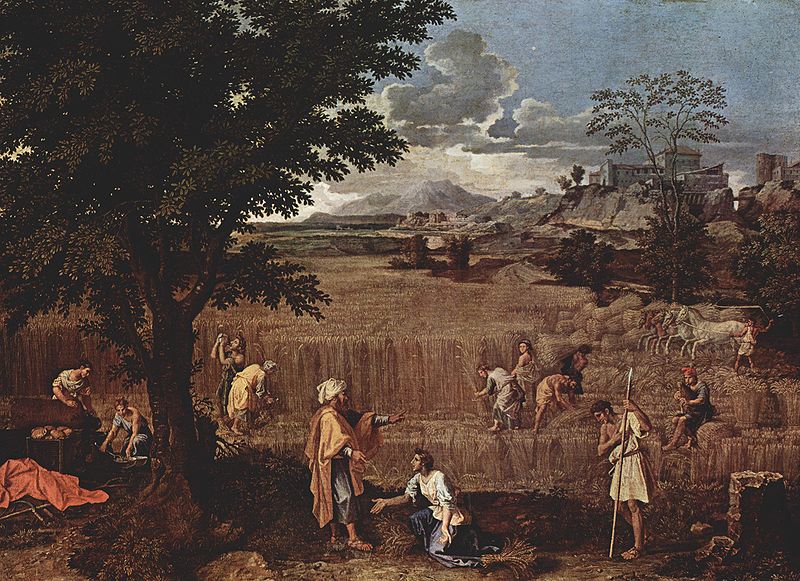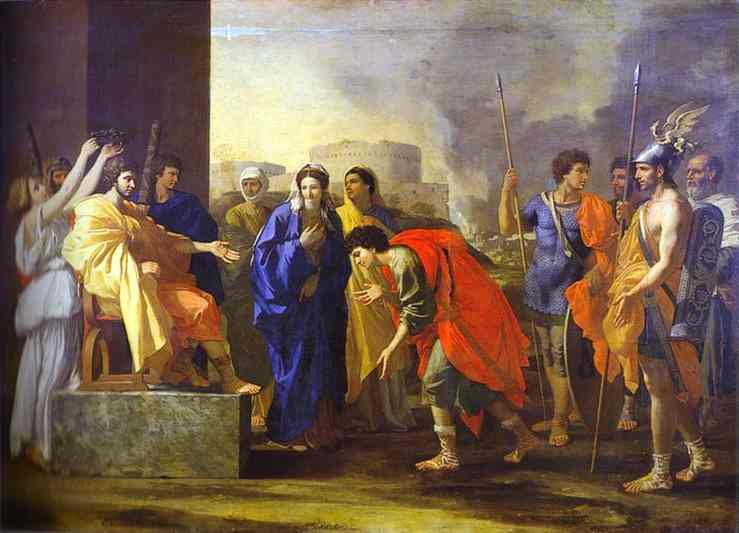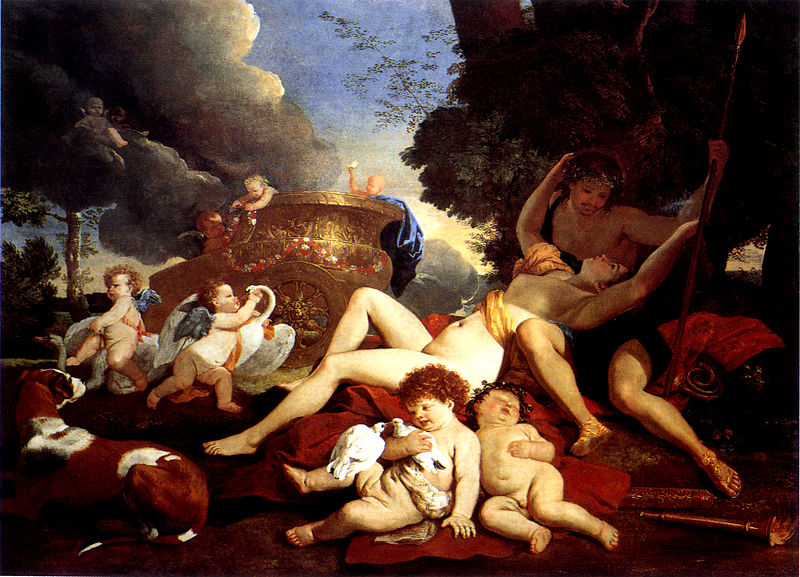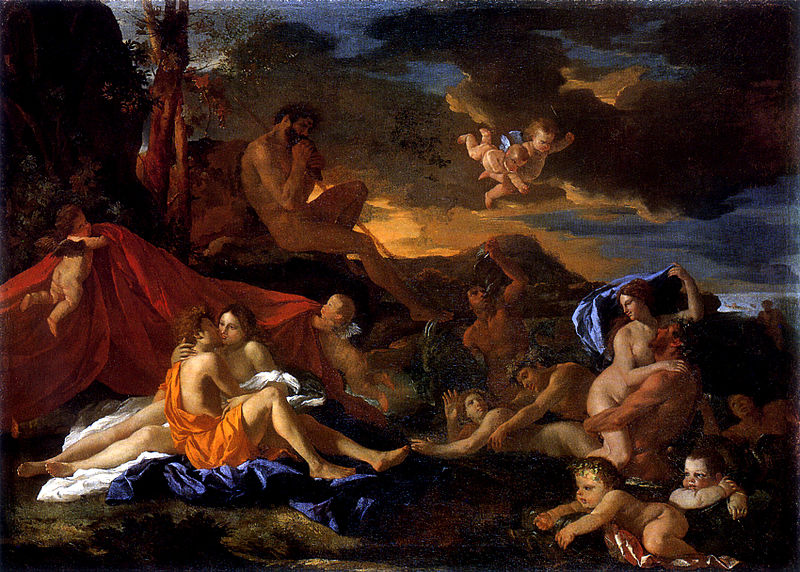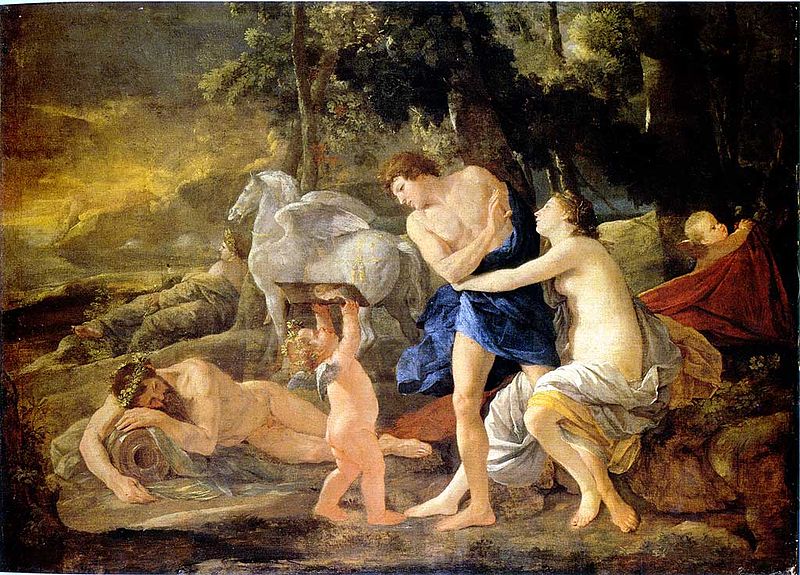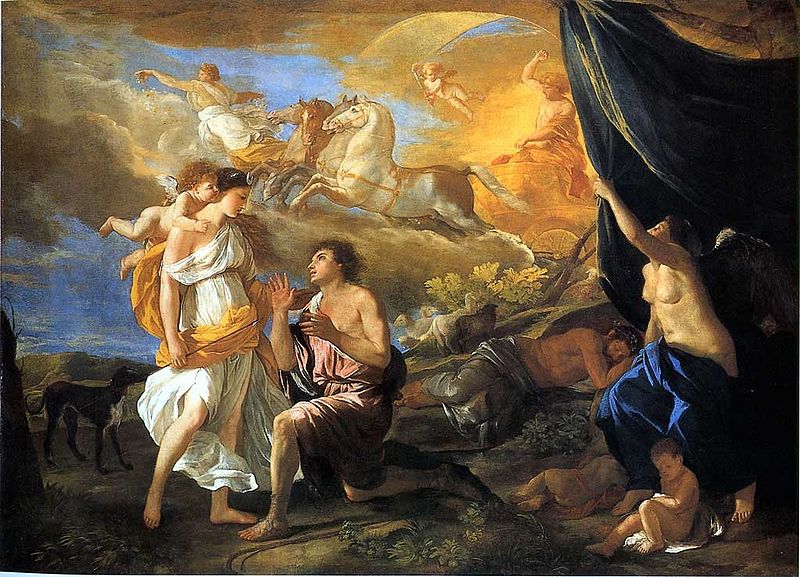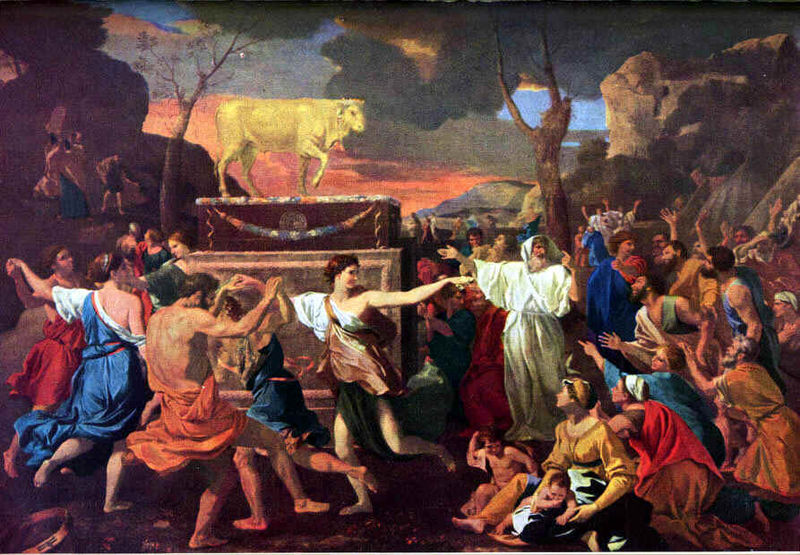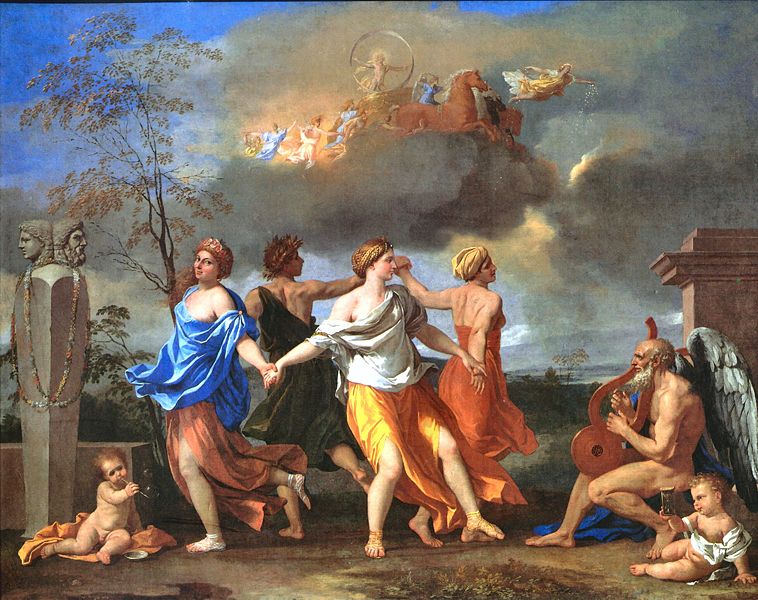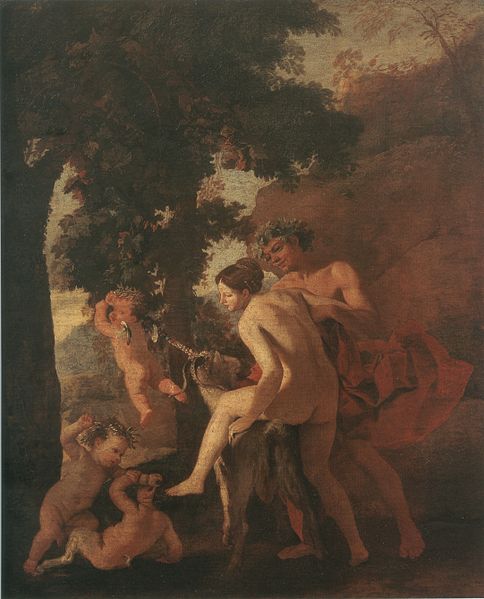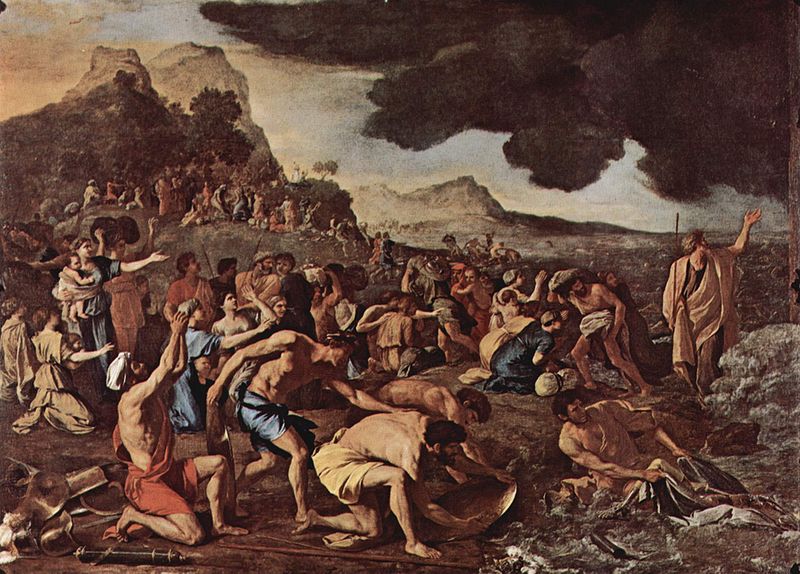<Back to Index>
- Painter Georges de La Tour, 1593
- Painter Nicolas Poussin, 1594
PAGE SPONSOR
Georges de La Tour was born in the town of Vic - sur - Seille in the Diocese of Metz, which was technically part of the Holy Roman Empire, but had been ruled by France since 1552. Baptism documentation reveal that he was the son of Jean de La Tour, a baker, and Sybille de La Tour, née Molian. It has been suggested that Sybille came from a partly noble family. His parents had seven children in all, with Georges being the second born.
La Tour's educational background remains somewhat unclear, but it is assumed that he traveled either to Italy or the Netherlands early in his career. He may possibly have trained under Jacques Bellange in Nancy, the capital of Lorraine, although their styles are very different. His paintings reflect the Baroque naturalism of Caravaggio, but this probably reached him through the Dutch Caravaggisti of the Utrecht School and other Northern (French and Dutch) contemporaries. In particular, La Tour is often compared to the Dutch painter Hendrick Terbrugghen.
In 1617 he married Diane Le Nerf, from a minor noble family, and in 1620 he established his studio in her quiet provincial home town of Lunéville, part of the independent Duchy of Lorraine which was absorbed into France, during his lifetime, in 1641. He painted mainly religious and some genre scenes. He was given the title "Painter to the King" (of France) in 1638, and he also worked for the Dukes of Lorraine in 1623–4, but the local bourgeoisie provided his main market, and he achieved a certain affluence. He is not recorded in Lunéville in 1639 – 42, and may have traveled again; Anthony Blunt detected the influence of Gerrit van Honthorst in his paintings after this point. He was involved in a Franciscan led religious revival in Lorraine, and over the course of his career he moved to painting almost entirely religious subjects, but in treatments with influence from genre painting.
Georges de la Tour and his family died in 1652 in an epidemic in Lunéville. His son Étienne (born 1621) was his pupil.
His early work shows influences from Caravaggio, probably via his Dutch followers, and the genre scenes of cheats — as in The Fortune Teller —and fighting beggars clearly derive from the Dutch Caravaggisti, and probably also his fellow Lorrainer, Jacques Bellange. These are believed to date from relatively early in his career.
La Tour is best known for the nocturnal light effects which he developed much further than his artistic predecessors had done, and transferred their use in the genre subjects in the paintings of the Dutch Caravaggisti to religious painting in his. Unlike Caravaggio his religious paintings lack dramatic effects. He painted these in a second phase of his style, perhaps beginning in the 1640s, using chiaroscuro, careful geometrical compositions, and very simplified painting of forms. His work moves during his career towards greater simplicity and stillness — taking from Caravaggio very different qualities than Jusepe de Ribera and his Tenebrist followers did.
He often painted several variations on the same subjects, and his surviving output is relatively small. His son Étienne was his pupil, and distinguishing between their work in versions of La Tour's compositions is difficult. The version of the Education of the Virgin, in the Frick Collection in New York is an example, as the Museum itself admits. Another group of paintings, of great skill but claimed to be different in style to those of La Tour, have been attributed to an unknown "Hurdy - gurdy Master". All show older male figures (one group in Malibu includes a female), mostly solitary, either beggars or saints.
After his death at Lunéville
in 1652, La Tour's work was forgotten until rediscovered by Hermann
Voss, a German scholar, in 1915; some of La Tour's work had in fact been
confused with Vermeer,
when the Dutch artist underwent his own rediscovery in the nineteenth
century. In 1935 an exhibition in Paris began the revival in interest
among a wider public. In the twentieth century a number of his works
were identified once more, and forgers tried to help meet the new demand; many aspects of his œuvre remain controversial among art historians.
Director Peter Greenaway has described de La Tour's work as a primary influence on his 1982 film The Draughtsman's Contract.
A reference to a work purportedly by de La Tour is featured prominently in the 2003 Merchant Ivory film Le Divorce.
Magdalene with the Smoking Flame (not Penitent Magdalene) is the painting in Ariel's grotto she longingly motions toward when she yearns to know about fire while singing "Part of Your World" in Disney's 1989 film The Little Mermaid.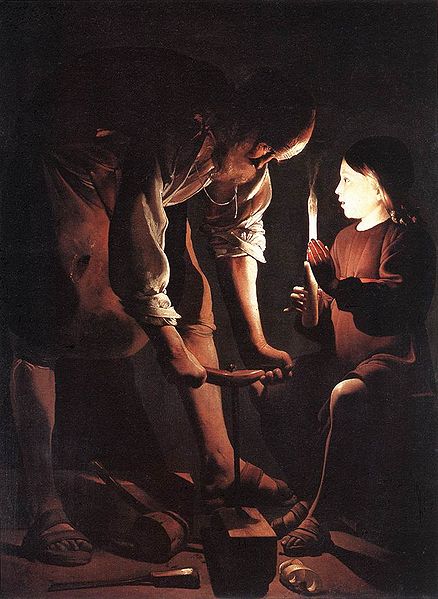

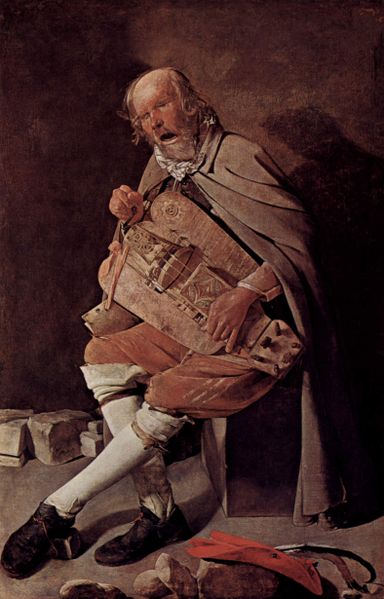
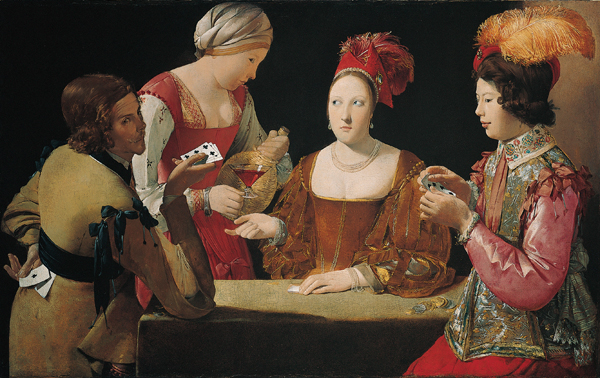
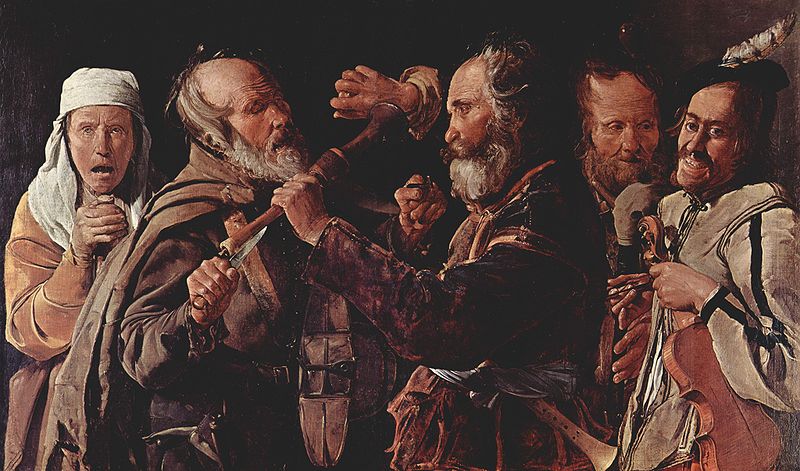
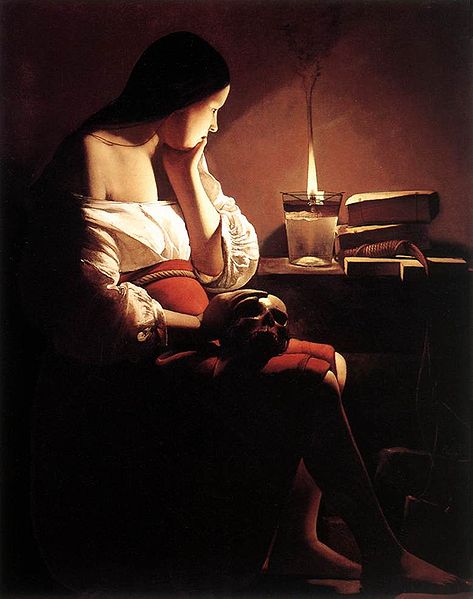
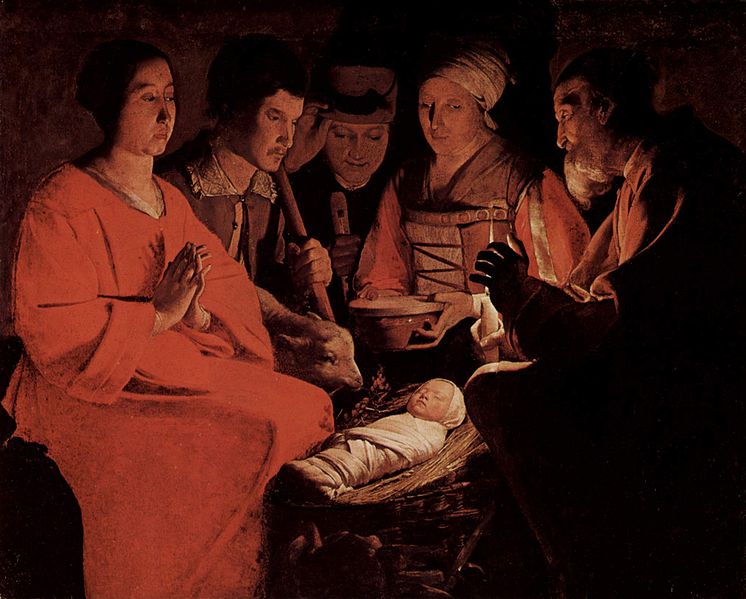
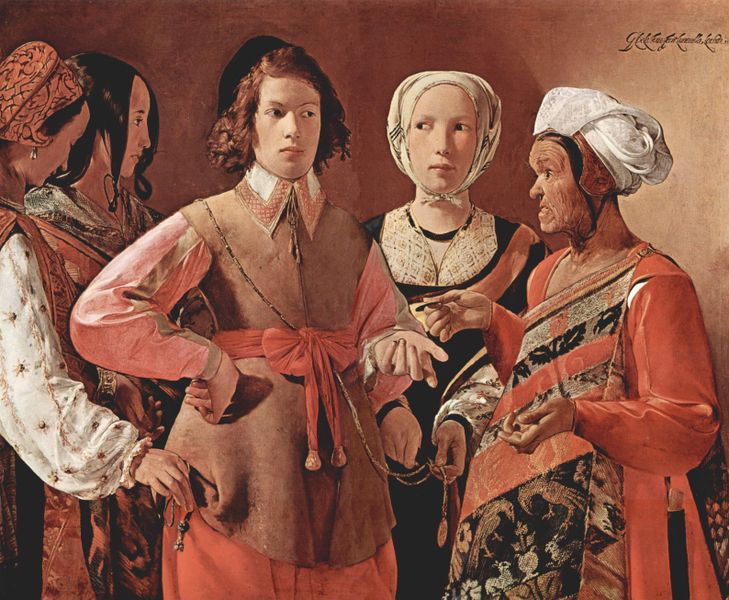
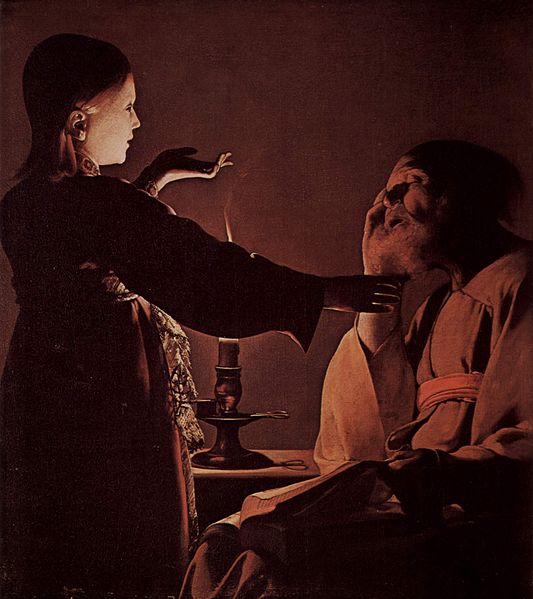
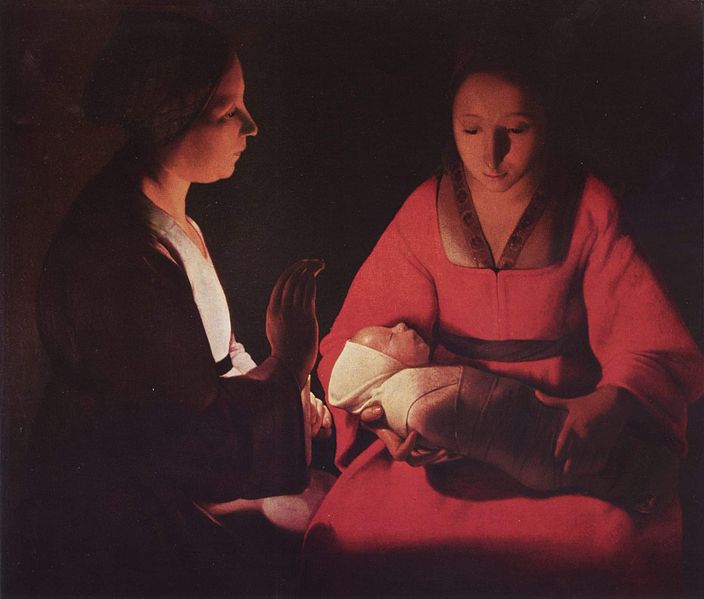
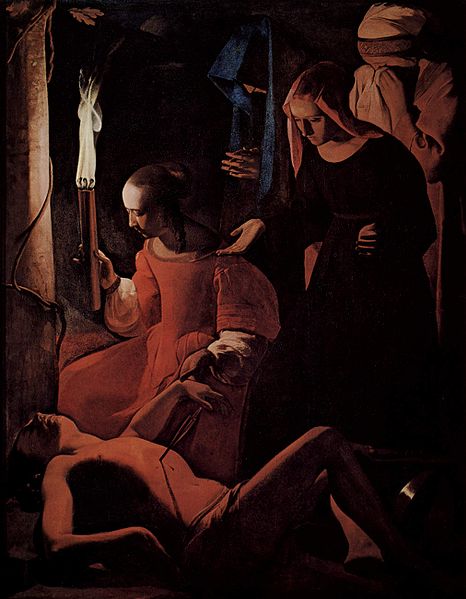
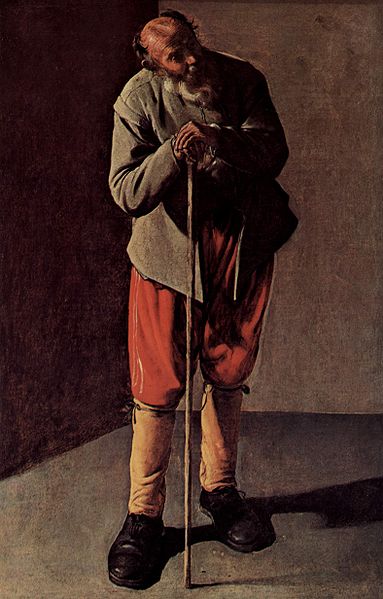
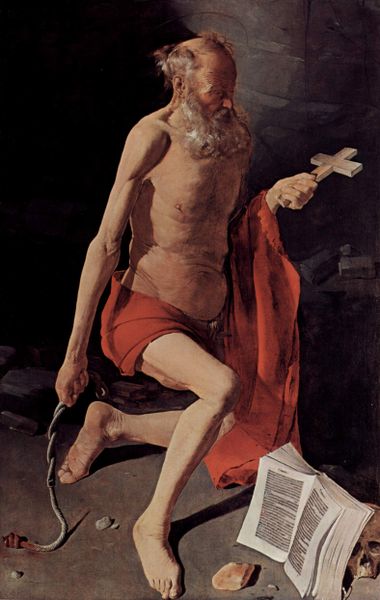
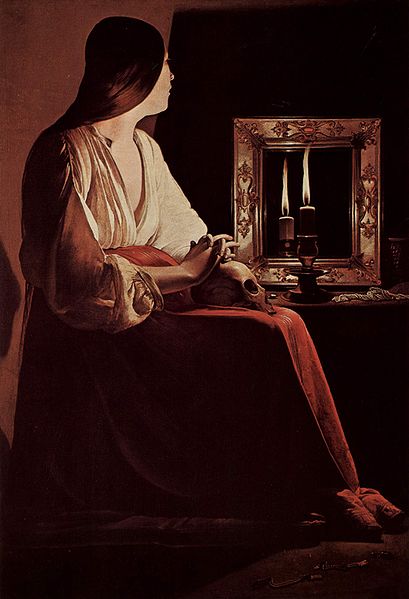
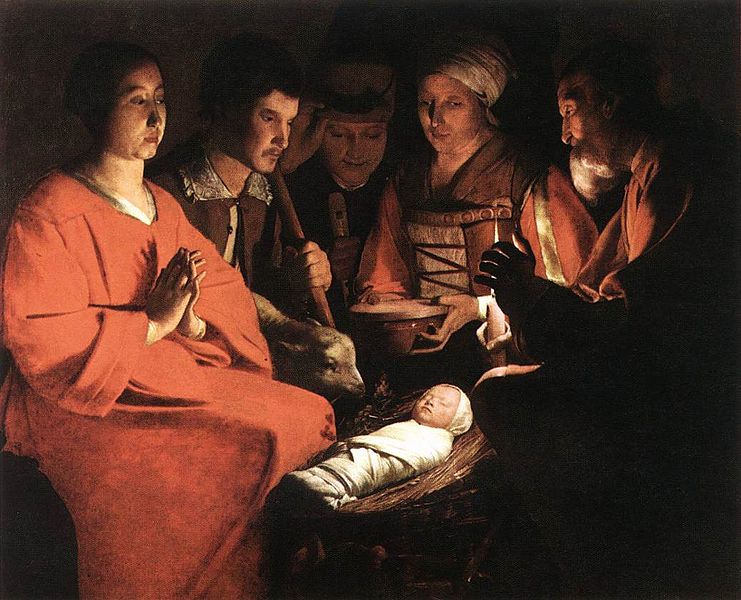
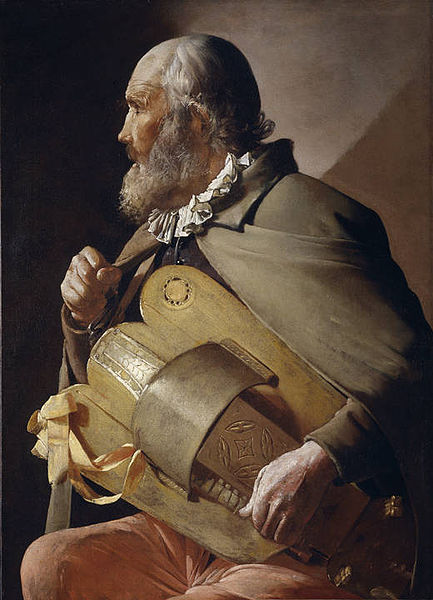
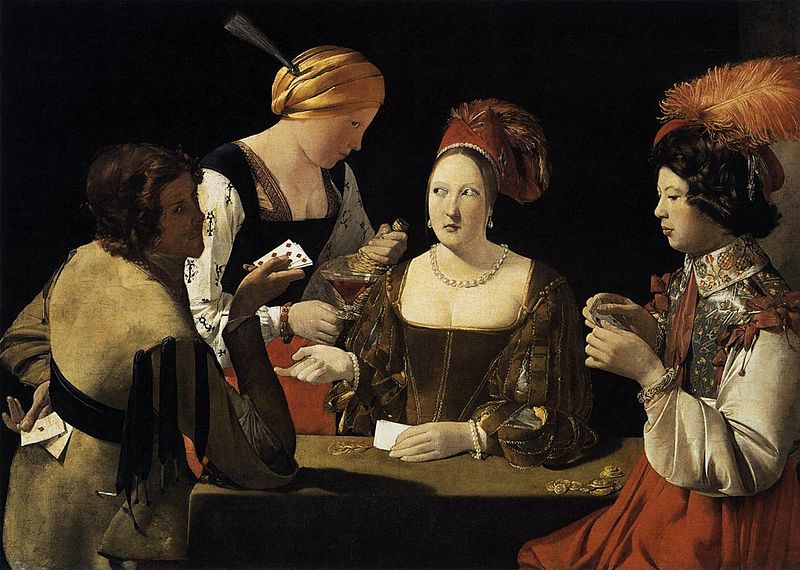
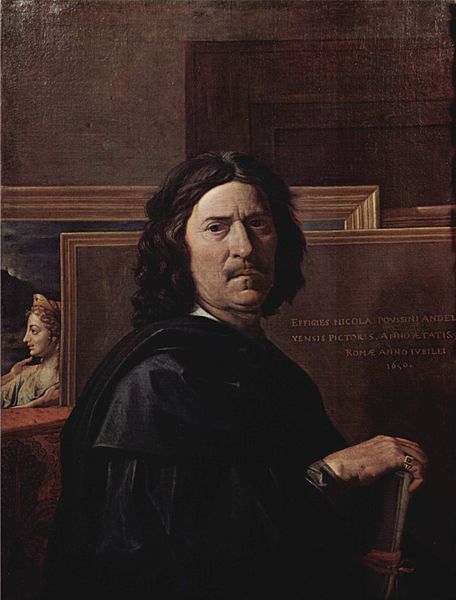
Nicolas Poussin (15 June 1594 – 19 November 1665) was a French painter in the classical style. His work predominantly features clarity, logic and order, and favors line over color. His work serves as an alternative to the dominant Baroque style of the 17th century. Until the 20th century he remained the major inspiration for such classically oriented artists as Jacques - Louis David, Jean - Auguste - Dominique Ingres and Paul Cézanne.
He spent most of his working life in Rome, except for a short period
when Cardinal Richelieu ordered him back to France to serve as First Painter to the King.
Nicolas Poussin's early biographer was his friend Giovanni Pietro Bellori, who relates that Poussin was born near Les Andelys in Normandy and that he received an education that included some Latin, which would stand him in good stead. Early sketches attracted the notice of Quentin Varin, a local painter, whose pupil Poussin became, until he ran away to Paris at the age of eighteen. There he entered the studios of the Flemish painter Ferdinand Elle and then of Georges Lallemand, both minor masters now remembered for having tutored Poussin. He found French art in a stage of transition: the old apprenticeship system was disturbed, and the academic training destined to supplant it was not yet established by Simon Vouet; but having met Courtois the mathematician, Poussin was fired by the study of his collection of engravings by Marcantonio Raimondi after Italian masters.
After two abortive attempts to reach Rome, he fell in with Giambattista Marino, the court poet to Marie de Medici, at Lyon. Marino employed him on illustrations to his poem Adone (untraced) and on a series of illustrations for a projected edition of Ovid's Metamorphoses, took him into his household, and in 1624 enabled Poussin (who had been detained by commissions in Lyon and Paris) to rejoin him at Rome. It has been suggested that it was this early friendship with Marino, and the commissioning of illustrations of his poetry (which drew on Ovidian themes), that founded, or at least reinforced, the prominent eroticism in Poussin's early work.
Poussin was thirty when he arrived in Rome. At first he lodged with Simon Vouet. Through Marino, he had been introduced to Marcello Sacchetti who in turn introduced him to another of his early patrons, Cardinal Francesco Barberini. Financial difficulties arose with the departure to Spain of Barberini, accompanied by Cassiano dal Pozzo,
the antiquarian and the Cardinal's secretary, who later would become a
great friend and patron. However, their return from Spain in 1626
stabilized Poussin’s position, with renewed patronage by the Barberini
and their circle. Two major commissions at this period resulted in
Poussin's early masterwork, the Barberini Death of Germanicus (1628), partly inspired by the reliefs of the Meleager sarcophagus, and the commission for St. Peter's that amounted to a public debut, the Martyrdom of St. Erasmus (1629, Vatican Pinacoteca), indebted to designs on the same subject by the contemporary Baroque painter, Pietro da Cortona.
He fell ill at this time and was taken into the house of his compatriot
Jacques Dughet, where he was nursed by Dughet’s daughter, Anna Maria,
who Poussin married in 1630. His two brothers - in - law were artists
and Gaspard Dughet later took Poussin’s surname.
During the late 1620s and 1630s, he had the opportunity to experiment and formulate his own stance in painting with reference to others which he did through study of the Antique and works such as Titian’s Bacchanals at the Casino Ludovisi and the paintings of Domenichino and Guido Reni. At the same time, the Roman Baroque was emerging: in the 1620s Cortona was producing his early Baroque paintings for the Sacchetti family; Bernini, having established his reputation in sculpture, was designing the great bronze baldachin in St. Peter’s; and an ingenious architectural imagination was emerging in works by Borromini.
Poussin became acquainted with other artists in Rome and tended to befriend those with classicizing artistic leanings: the French sculptor François Duquesnoy whom he lodged with in 1626; the French artist Jacques Stella; Claude Lorraine; Domenichino; Andrea Sacchi; and joined an informal academy of artists and patrons opposed to the current Baroque style that formed around Joachim von Sandrart.
At the time the papacy was Rome’s foremost patron of the arts. Poussin’s Martyrdom of St. Erasmus
for St. Peter’s was Poussin’s only papal commission, secured for him by
Cardinal Barberini, the papal nephew, and Poussin was not asked again
to contribute major altarpieces or paint large scale decorations for a
pope. His subsequent career depended on private patronage. Apart from
Cardinal Francesco Barberini, his first patrons included Cardinal Luigi
Omodei, for whom he produced the Triumphs of Flora (c 1630 – 32, Louvre); Cardinal de Richelieu, who commissioned various Bacchanals; Vincenzo Giustiniani, for whom he painted the Massacre of the Innocents (uncertain early date, Museé Condé, Chantilly); Cassiano dal Pozzo who became the owner of the first series of the Seven Sacraments (late 1630s, Belvoir Castle); and Paul Fréart de Chantelou, with whom Poussin, at the call of Sublet de Noyers, returned to France in 1640.
Louis XIII conferred on him the title of First Painter in Ordinary. In two years at Paris he produced several pictures for the royal chapels (the Last Supper, painted for Versailles, now in the Louvre), eight cartoons for the Gobelins tapestry manufactory, the series of the Labors of Hercules for the Louvre, the Triumph of Truth for Cardinal Richelieu (Louvre), and much minor work.
In 1642, disgusted by the intrigues of Simon Vouet, Fouquières and the architect Jacques Lemercier, Poussin withdrew to Rome. There, in 1648, he finished for de Chantelou the second series of the Seven Sacraments (Bridgewater Gallery), and also his noble Landscape with Diogenes (Louvre). This painting shows the philosopher discarding his last worldly possession, his cup, after watching a man drink water by cupping his hands. In 1649 he painted the Vision of St Paul (Louvre) for the comic poet Paul Scarron, and in 1651 the Holy Family (Louvre) for the duc de Créquy. Year by year he continued to produce an enormous variety of works, many of which are included in the list given by Félibien.
He suffered from declining health after 1650, and was troubled by a worsening tremor in his hand, evidence of which is apparent in his late drawings. He died in Rome on 19 November 1665 and was buried in the church of San Lorenzo in Lucina, his wife having predeceased him. Chateaubriand in 1820 donated the monument to Poussin.
Poussin left no children, but he adopted as his son Gaspard Dughet
(Gasparo Duche), his wife's brother, who became a painter and took the
name of Poussin.
Throughout his life Poussin stood apart from the popular tendency toward the decorative in French art of his time. In Poussin's works a survival of the impulses of the Renaissance is coupled with conscious reference to the art of classical antiquity as the standard of excellence. His goal was clarity of expression achieved by disegno or ‘nobility of design’ in preference to colore or color. Perhaps his concern with disegno can best be seen in the line engraved copies of his works; among the many who reproduced his paintings, some of the most successful are Audran, Claudine Stella, Picart and Pesne.
Themes of tragedy and death are prevalent in Poussin's work. Et in Arcadia ego, a subject he painted twice, exemplifies his cerebral approach. In this composition, idealized shepherds examine a tomb inscribed with the title phrase, which is usually interpreted as a memento mori: "Even in Arcadia I exist", as if spoken by personified Death. Poussin intended his figures to "display the most distilled and most typical attitude and emotion for the role they were playing", but he was concerned with emotion "in a generalized and not specific way ... Thus in both compositions of Et in Arcadia Ego (Chatsworth and Louvre) the theme is the realization of death in life. The specific models hardly matter. We are not intended to have sympathy with them and instead we are forced by the artist to think on the theme."
Poussin is an important figure in the development of landscape painting. In his early paintings the landscape usually forms a graceful background for a group of figures; later he progressed to the painting of landscape for its own sake, although the figure is never entirely absent. Examples are Landscape with St. John on Patmos (1640), (Art Institute of Chicago) and Landscape with a Roman Road (1648), (Dulwich Picture Gallery).
The finest collection of Poussin's paintings is at the Louvre in
Paris. Other significant collections are in the National Gallery in
London; the National Gallery of Scotland; the Dulwich Picture Gallery;
the Musée Condé, Chantilly; the Hermitage Museum, St. Petersburg; and the Museo del Prado, Madrid.
Initially, Poussin's genius was recognized only by small circles of collectors. (In the two decades following his death, a particularly large collection of his works was amassed by Louis XIV.) At the same time, it was recognized that he had contributed a new theme of "classical severity" to French art.
Benjamin West, an American painter of the 18th century who worked in Britain, based his canvas of the death of General Wolfe at Quebec on Poussin's example. As a result, the image is one in which each character gazes with appropriate seriousness on Wolfe's death after securing British domination of North America.
Jacques - Louis David resurrected a style already known as "Poussinesque" during the French Revolution in part because the leaders of the Revolution looked to replace the frivolity and oppression of the court with Republican severity and civic mindedness, most obvious in David's dramatic canvas of Brutus receiving the bodies of his sons, sacrificed to his own principles, and the famous death of Marat.
Throughout the 19th century, Poussin, available to the ordinary person's gaze because the Revolution had opened the collections of the Louvre, was inspirational for thoughtful and self - reflexive artists who pondered their own work methods, notably Cézanne, who strove to "recreate Poussin after nature", and the Post - Impressionists. In addition to formal considerations, also appealing was the eroticism of some of Poussin's classicizing subjects.
In the twentieth century art critics have suggested that the "analytic Cubist" experiments of Pablo Picasso and Georges Braque were founded upon Poussin's example. In 1963 Picasso based a series of paintings on Poussin's The Rape of the Sabine Women. The work of Jean Hugo was also influenced by Poussin.
The most famous 20th century scholar of Poussin was the Englishman Anthony Blunt, Keeper of the Queen's Pictures, who in 1979 was disgraced by revelations of his complicity with Soviet intelligence.
Today, Poussin's paintings at the Louvre reside in a gallery dedicated to him.
